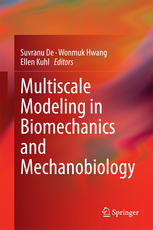

Most ebook files are in PDF format, so you can easily read them using various software such as Foxit Reader or directly on the Google Chrome browser.
Some ebook files are released by publishers in other formats such as .awz, .mobi, .epub, .fb2, etc. You may need to install specific software to read these formats on mobile/PC, such as Calibre.
Please read the tutorial at this link: https://ebookbell.com/faq
We offer FREE conversion to the popular formats you request; however, this may take some time. Therefore, right after payment, please email us, and we will try to provide the service as quickly as possible.
For some exceptional file formats or broken links (if any), please refrain from opening any disputes. Instead, email us first, and we will try to assist within a maximum of 6 hours.
EbookBell Team

4.0
86 reviewsPresenting a state-of-the-art overview of theoretical and computational models that link characteristic biomechanical phenomena, this book provides guidelines and examples for creating multiscale models in representative systems and organisms. It develops the reader's understanding of and intuition for multiscale phenomena in biomechanics and mechanobiology, and introduces a mathematical framework and computational techniques paramount to creating predictive multiscale models.
Biomechanics involves the study of the interactions of physical forces with biological systems at all scales – including molecular, cellular, tissue and organ scales. The emerging field of mechanobiology focuses on the way that cells produce and respond to mechanical forces – bridging the science of mechanics with the disciplines of genetics and molecular biology. Linking disparate spatial and temporal scales using computational techniques is emerging as a key concept in investigating some of the complex problems underlying these disciplines.
Providing an invaluable field manual for graduate students and researchers of theoretical and computational modelling in biology, this book is also intended for readers interested in biomedical engineering, applied mechanics and mathematical biology.